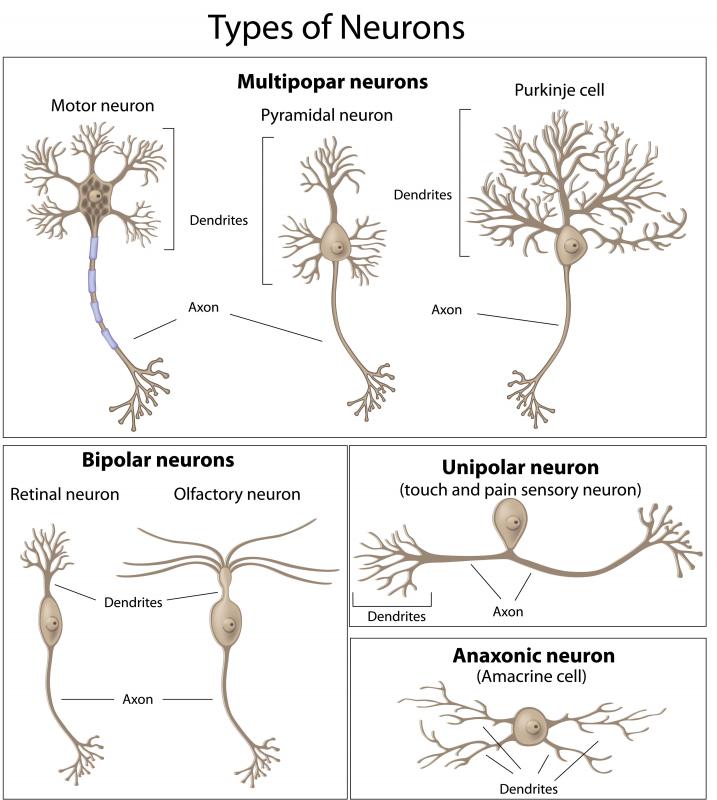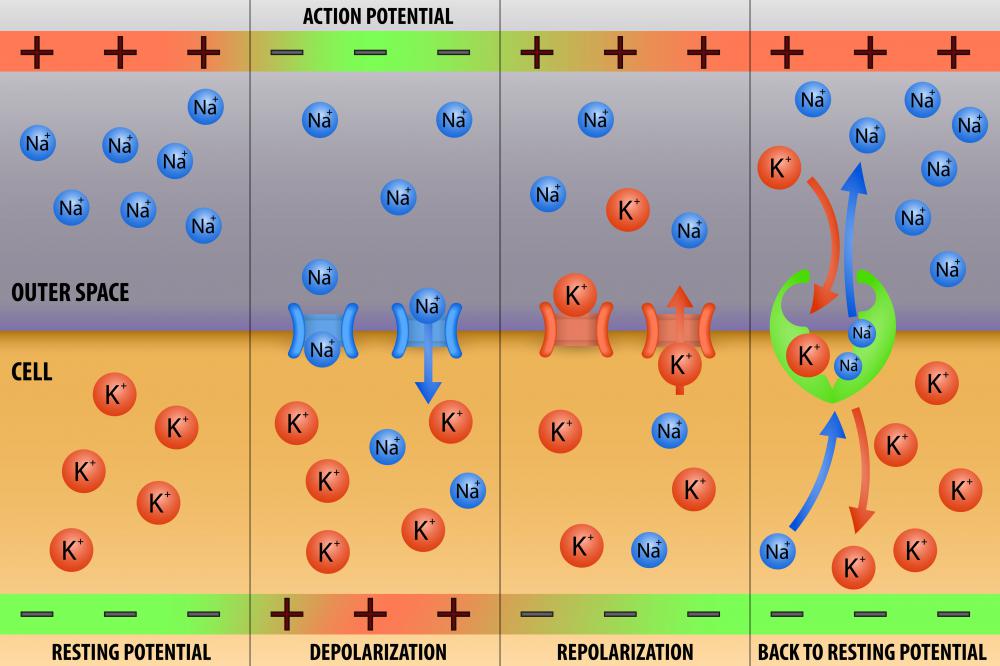At WiseGEEK, we're committed to delivering accurate, trustworthy information. Our expert-authored content is rigorously fact-checked and sourced from credible authorities. Discover how we uphold the highest standards in providing you with reliable knowledge.
What Is Action Potential Generation?
An action potential is the change in the relative charge across the membrane of some cells found within animals and plants. Cells that undergo action potentials are called excitable cells and include nerve cells, muscle cells, and cells of the endocrine system — or hormone producing system. Action potential generation is the process that causes the change in the charge across the membrane.
There are four basic stages that are involved in action potential generation. When an action potential is not occurring, the cell is said to be in the resting phase. Within a nerve cell, the relative charge within the cell is about -70 milliVolts (mV) at this stage. The resting potential of the cell is maintained by charged ions found within and around the cell. For nerve cells, positively charged potassium ions are found with the cell membrane, while positively charged sodium ions and negatively charged chloride ions are found outside the cell.

The levels of the ions found within and outside the cell are controlled by ion gates and pumps. During the resting potential stage for nerve cells, potassium ions are pumped into the cell and sodium ions are pumped out. The concentration of these ions relative to each other is what causes the charge across the membrane. At this time, the cell is said to be polarized.

For an action potential to be triggered, the charge within the cell has to be reversed. When a stimulus is applied to the cell, it can cause a depolarization to occur. Action potential generation needs a stimulus that meets or exceeds a certain threshold level. If the threshold is not met, the action potential will not be generated. The size of the action potential is the same whether the threshold is reached or exceeded, so action potential generation is called an "all or none event."
During depolarization, the ion channels open so that sodium ions rush into the cell. This causes the cells to undergo a reverse in charge. For nerve cells, the threshold for action potential generation is a charge of +40 mV. This takes place in less than two milliseconds, or two one-thousandths of a second. As soon as the action potential has been generated, repolarization of that area of the cell membrane begins.
Once an action potential has been triggered within one of these types of cells, it is said to be self-propagating. This means that the action potential in one area of the membrane stimulates the cells to begin the process of action potential generation in the adjacent section of the membrane. As a result, the action potential moves along the length of the cell.
AS FEATURED ON:
AS FEATURED ON:












Discuss this Article
Post your comments